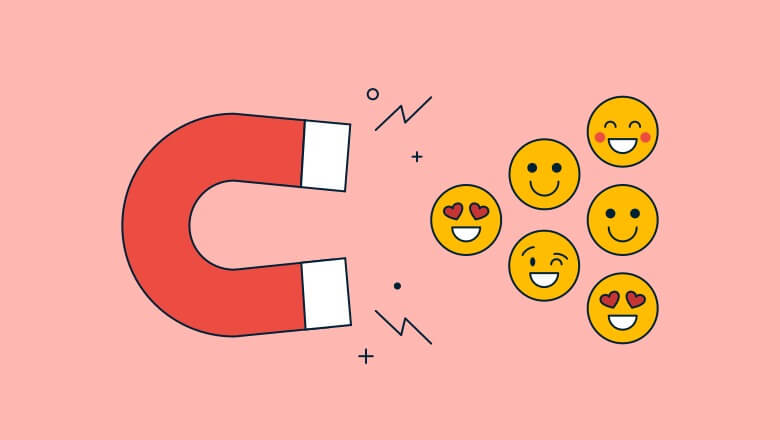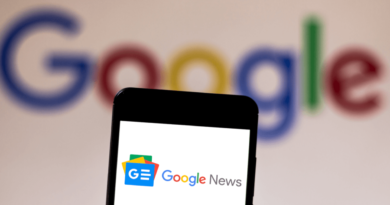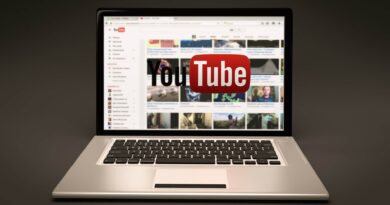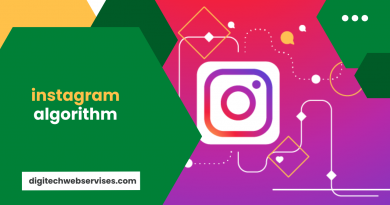How to define an Inbound Marketing strategy that converts
The best way to convert your website users into loyal customers is through a good Inbound Marketing strategy. You do not know what it is? We explain in detail all the necessary steps to create your own Inbound Marketing strategy. Ready to start selling more?
Today we want to explain all the steps you must follow to define your own Inbound Marketing strategy that turns your website users into loyal customers.
We are not going to deceive you: it is not an easy or fast process, but if you do it well, the benefits you will obtain will be very high.
As you well know ( we will tell you in this post , in case you want to review) Inbound Marketing (or Attraction Marketing) is a non-intrusive methodology of Online Marketing that uses different techniques so that it is the user who finds the company. Its main objective is to attract and retain customers by adding value thanks to high-quality content that is personalized for each customer and phase in which they are.
We can differentiate 4 phases of Inbound Marketing:
Attract : generate quality traffic to your website. That is, users that you know have the potential to become customers, since they are part of your target audience. How do we attract this type of traffic? With good content, SEO, Social Networks and / or online advertising.
Convert : your main objective is to convert this traffic into sales opportunities, that is, into leads ( do you know what a lead is? ). With a good database (segmented user lists), you can start taking actions to convert users into customers. How? Thanks to “Landing Pages”, “Lead Magnets” and good “Call To Action” or calls to action.
Close : using automation tools and “lead nurturing” (now we will talk about this, don’t worry), you will close a user’s purchase cycle. That is, you will close a sale.
Delight : a customer buying from you is not enough. A good Inbound Marketing strategy you want this customer to repeat. Repeat and become a brand evangelist to promote us for free. The more recommendations, the more new customers.
A good Inbound Marketing strategy in your company must have each of these phases to achieve the planned objectives. Today we will see all the necessary steps so that you can create a successful Inbound Marketing strategy.
THE NECESSARY STEPS TO DEFINE A GOOD INBOUND MARKETING STRATEGY
Table of Contents
We are going to talk about all the steps you have to follow to create an Inbound Marketing strategy that converts and achieves all your established objectives. We go little by little so that nothing happens to you:
1. Define the campaign
First of all, as in any action you take both in the online and offline world, you have to define the campaign you are going to create. You cannot start haphazardly, quickly. No sir. First we have to sit down, think, debate and have the entire campaign plan in writing.
to. Establish the objectives of the strategy
What do we want to achieve with our Inbound Marketing strategy? How many leads? How many new followers on social networks? How many sales of each product? The objectives that you set for yourself have to follow the SMART process (specific, measurable, achievable, relevant and temporary) and it is essential that you establish them if you want to measure the return on the investment you make (the ROI).
b. Get to know the company and the product / service in depth.
You can’t start working on your content, create Facebook Ads campaigns, send emails, etc. If you are not clear about who you are and what you offer. Create a SWOT of your company and write (yes, even if you know it, write it better) what is the differential feature of your product or service. What makes it unique in front of your competition. Also write down what are the values of your brand, philosophy, vision and mission. Let it be clear.
c. Define the target audience
You have to be clear about who your target is, that is, the audience of people you are targeting. For your Inbound Marketing strategy to convert, it is essential that you create your Buyer Persona and always keep it in mind when you carry out the different actions.
What is a Buyer Persona , you ask?
This is a fictitious person who represents our ideal buyer. Or several people, if your business is focused on different targets. We give this fictitious person a series of characteristics (both physical, demographic, sociocultural …) to make it as real as possible, giving him a name and, if possible, a photograph.
To create a Buyer Perona, you need information about:
- Personal profile : name of the person, age, sex, marital status, level of studies, residence, income, his relationship with family and friends, what are his hobbies, what are his goals in life …
- Professional profile : in which sector do you work, what is the size of your company, what tasks you carry out in the company, what are your responsibilities, what work objectives do you have, what are your main problems …
- Behavior : what are your hobbies, what blogs do you read, what topics interest you …
- Buying habits : how do you prefer to be in contact with companies, do you buy online or do you prefer physical stores, how often do you buy online, what is the last thing you bought …
- Needs : what do you need both personally and professionally, how can we help you with our product, what do you expect to get from it …
d. Plan
All strategies and campaigns must be defined in time. It is not the same to want to sell 100 units of product X in 2 days than in 2 years. Define the start and end of the campaign you want to carry out and create a calendar.
When will you post on the blog? How often will you post on Social Networks? How many newsletters will you send a week?
and. Define the resources you have
It is also essential that, before you start, you are clear about the resources you have. A company that has a Marketing department of 16 people and a budget of € 7,000 is not the same as a SME or a freelancer, right?
You have to define:
to. Material : content, tools, etc.
b. Personnel : professionals from each field.
c. Budget : how much do you want to spend.
2. ATTRACTION: attract traffic to your website
The first part of Inbound Marketing is to attract qualified traffic to your website. To do this, we use different tactics / channels:
SEO
Social Media
Online Advertising
PR
What do they all have in common? They need CONTENT that is of a high quality so that users will be surrendered to it.
What we have to do is create a content strategy to know what to publish, when to do it, where to do it and where to spread it.
This content strategy must contain:
- Study of the current situation of the company (we have already seen it).
- Main objectives (get leads, get diffusion, get sales).
- Target (too, too).
- What type of content will we publish: blog articles, guest posts, videos, infographics, press releases, podcasts, emails, lead magnets (such as guides, tutorials, whitepapers, product sheets, presentations….).
- Keyword study (to improve the SEO of the posts). – What channels will we use to share the content (social networks, email marketing, blogs or third-party websites, advertisements on social networks …).
- The purchase cycle (or sales funnel) of our users and what content we must offer at each stage.
- Editorial calendar.
- KPIs to measure. Once we have the content that we must create, we will get to work to start attracting users to our website.
3. CONVERSION: from users to LEADS
The second step we must take is to try to convert the users who have come to our website into leads, that is, into subscribers. In people who have given us their data because they are interested in our company, product or service.
To get a greater number of leads, we will base ourselves on three strategies:
Landing Page : it is a web page that has only one objective: to convert.
Lead Magnet : piece of content that we give away in exchange for users’ personal data. It can be anything: eBook, guide, template, whitepaper, product sheet, tutorial, video, promotion, discount, demo, etc. It depends on where our user is (within the sales funnel), we will offer one lead magnet or another.
CTA (call to action or call to action): text, image or button that tells users what to do (subscribe, download a file, etc.).
We must define the tactics that we will carry out to achieve this conversion. There are infinite ones, although all of them have the three assets that we have just defined.
Online advertising, SEO, contests, free courses, webinars, etc. Use your imagination and convert!
4. AUTOMATION: Lead Nurturing & Lead Scoring
Once we have converted users into leads, what we must do is make them go through the different stages of the sales funnel so that they end up buying (or hiring our services). Our ultimate goal.
To achieve this, we must accompany, in an automated way, these leads throughout the process. How? With personalized content.
We call these campaigns that we carry out so that our users end up buying Lead Nurturing . They basically consist of building a relationship of trust with the potential customer at each stage of the sales funnel, until they become brand evangelizers.
The sales funnel has three well-defined stages:
- TOFU : (top of the funnel): first stage where the potential client still does not know us very well. We call these leads cold. What content should we provide? Educational content and free downloadable content (such as guides, templates, ebooks).
- MOFU (middle of the funnel): these clients already know what problem or need they have and are looking for an effective solution. What content should we provide? Expert guides, tutorial videos, free webinars, etc.
- BOFU (bottom of the funnel): at this stage, the client already knows what they want, but it needs a little push so that it ends up deciding for us. What content should we provide? Case studies, product comparisons, product sheets with features and benefits, free demos or trials, discount coupons, etc.
We cannot do all this without working with Marketing Automation (we would go crazy if we had to go, one by one, knowing what phase our leads are in and send them the appropriate content).
Marketing automation tools allow you to accompany leads in the funnel in a personalized way so that they end up taking the action we want (hire or buy). These tools carry out a process called Lead Scoring to automatically give each lead a score (according to their level of commitment to our brand) and place them in one stage or another of the sales funnel. Thus, we know what we should offer each of our leads.
With these tools we can automate what is essential to improve our results.
5. CLOSING: we want recommendations
We got a sale! !! Congratulations!! Looks like our work here is done, right? Error!
Inbound Marketing does not end with a sale. What we want is for the people who have bought (or hired) from us, to be happy, to buy from us again and to recommend us to their friends to get new customers.
For that we will continue sending personalized emails (and automated, always automated, we do not want to work more than necessary), we will create loyalty programs, we will give away products or we will make discounts for being loyal buyers, etc, etc, etc. Everything in our power so that the client:
1. Don’t forget about us
2. “Use us” again
3. Value us positively
4. Recommend us to your friends or family
6. ANALYSIS: analyze and measure
We must not forget about this fundamental phase in any Inbound Marketing strategy that you want to convert to the maximum: analyze, analyze, analyze and measure all the actions you have taken.
Have we achieved the objectives set? What has been the ROI of our campaign? How many leads have they ended up converting? Which countries give us the best results? Should we invest more in online advertising, SEO, content writing or social media? What content has the best CTR? What content is the most viral? Where can we improve?
Only a good analysis will answer these questions. Most Inbound Marketing automation tools have their own analysis programs, but we recommend that you also always have Google Analytics at hand.
Never stop analyzing, measuring, testing and re-analyzing. It is the only way to perfect your Inbound Marketing strategy.
As you can see, creating a good Inbound Marketing strategy that turns your website users into loyal customers is not easy. But if you follow these steps, you will surely achieve all your goals. Let’s review:
- Define the campaign.
- Create a content strategy.
- Start getting quality traffic to your website.
- Convert these visits into leads (thanks to a landing page, lead magnet and CTA).
- Accompany leads through all stages of the sales funnel thanks to automation marketing.
- Get customers to repeat, value you positively and recommend you to their acquaintances.
- Always analyze all your actions to improve.
And do you know what the winning formula is? Patience, dedication, investment and a lot of desire . Without this formula it is impossible for you to get buyers.



